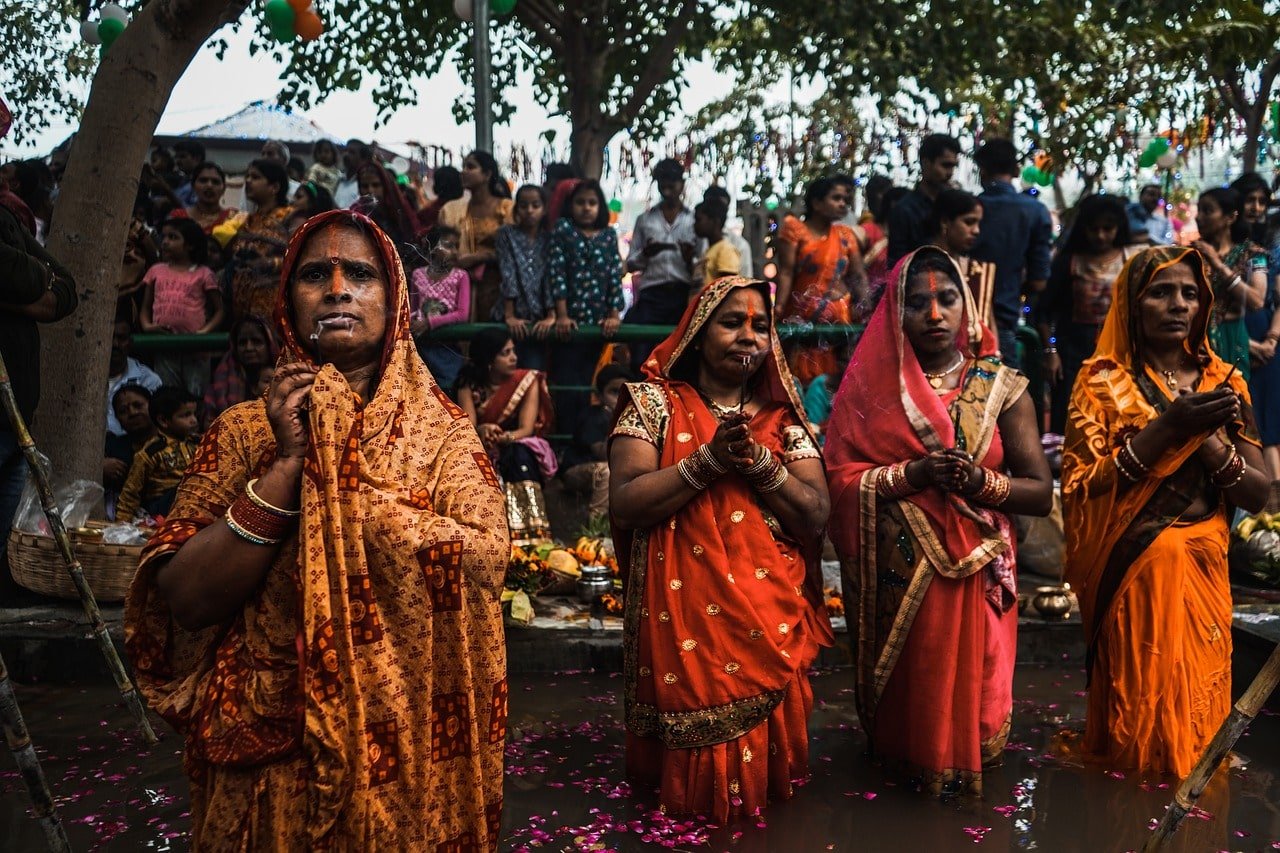Chhath Puja, a vibrant and ancient Hindu festival, holds a special place in the hearts of millions, especially in the Indian states of Bihar, Jharkhand, Uttar Pradesh, and parts of Nepal.
Celebrated with great fervor and devotion, this unique festival is dedicated to Lord Surya (the Sun God) and Chhathi Maiya, the Goddess of purity. It is observed on the sixth day after Diwali, during the month of Kartik according to the Hindu calendar.
Significance of Chhath Puja
The significance of Chhath Puja lies in its deep connection with nature, as it worships the Sun God, the ultimate source of energy and life on Earth. Devotees believe that the Sun God has the power to cure various ailments and ensure the well-being of their families.
Chhath Puja is not only a religious celebration but also a way of expressing gratitude to the Sun for sustaining life on our planet.
Way of Practicing Chhath Puja
Chhath Puja is a four-day festival, marked by rigorous rituals and a deep sense of devotion. The preparation begins days in advance, with homes being thoroughly cleaned, and devotees observing strict discipline and cleanliness. The first day, known as Nahay Khay, involves a ceremonial bath, followed by a vegetarian meal.
On the second day, Kharna, devotees observe a day-long fast, breaking it only after sunset with a special offering called kheer (sweetened rice).
The third day, known as Sandhya Arghya (evening offerings), is the most crucial day of Chhath Puja. Devotees gather at the ghats (riverbanks) or any water body, be it a river, pond, or lake, to offer arghya (offering) to the setting sun.
The rituals include standing in waist-deep water and offering fruits, sugarcane, and thekua (a special wheat-based sweet) to the Sun God.
The final day, Usha Arghya (morning offerings), takes place at the crack of dawn. Devotees return to the ghats to offer arghya to the rising sun, expressing gratitude for the life-sustaining energy it provides.
The elaborate rituals and the connection with natural elements make Chhath Puja a unique and spiritually uplifting experience.
Also Read | Sakshi Gupta Case 2023: A Fraud Family Destroyed Man’s Life |
History Chhath Puja
The origins of Chhath Puja can be traced back to ancient Vedic texts, where the Sun God has been revered as a symbol of life and energy. However, the contemporary form of Chhath Puja as a major festival is attributed to Draupadi, the queen of the Pandavas, from the epic Mahabharata.
According to legend, Draupadi and the Pandavas faced numerous hardships during their exile. Seeking guidance and strength, they approached the revered sage Dhaumya. He advised them to perform Chhath Puja to seek the blessings of Lord Surya. The Pandavas followed the rituals and were eventually able to overcome their challenges.
Over the centuries, Chhath Puja evolved into a major cultural and religious festival, with devotees passing down the traditions from one generation to the next. The festival has transcended its regional roots and gained popularity across various parts of India and the world.
Celebration Beyond Boundaries
While Chhath Puja has its roots in the northern regions of India, the festival has transcended geographical boundaries, with communities around the world coming together to celebrate this unique expression of gratitude to the Sun God. In cities far from the traditional heartlands, makeshift ghats are created, and the rituals are observed with the same enthusiasm and devotion.
The vibrant colors, rhythmic folk songs, and the sound of traditional musical instruments create an atmosphere of joy and spirituality during Chhath Puja. It is a time when communities unite, families come together, and people from all walks of life participate in the festivities, reinforcing the cultural diversity and unity that define the essence of India.
Conclusion
Chhath Puja is not merely a religious celebration; it is a cultural phenomenon that bridges the gap between humanity and nature. It teaches the value of discipline, cleanliness, and gratitude while fostering a deep connection with the environment.
As the sun sets and rises during the four days of Chhath Puja, it symbolizes the cycle of life, renewal, and the eternal connection between the divine and the mortal.
This festival, with its rich history and timeless traditions, continues to be a source of inspiration, fostering a sense of unity, devotion, and reverence for the life-sustaining energy of the Sun.
